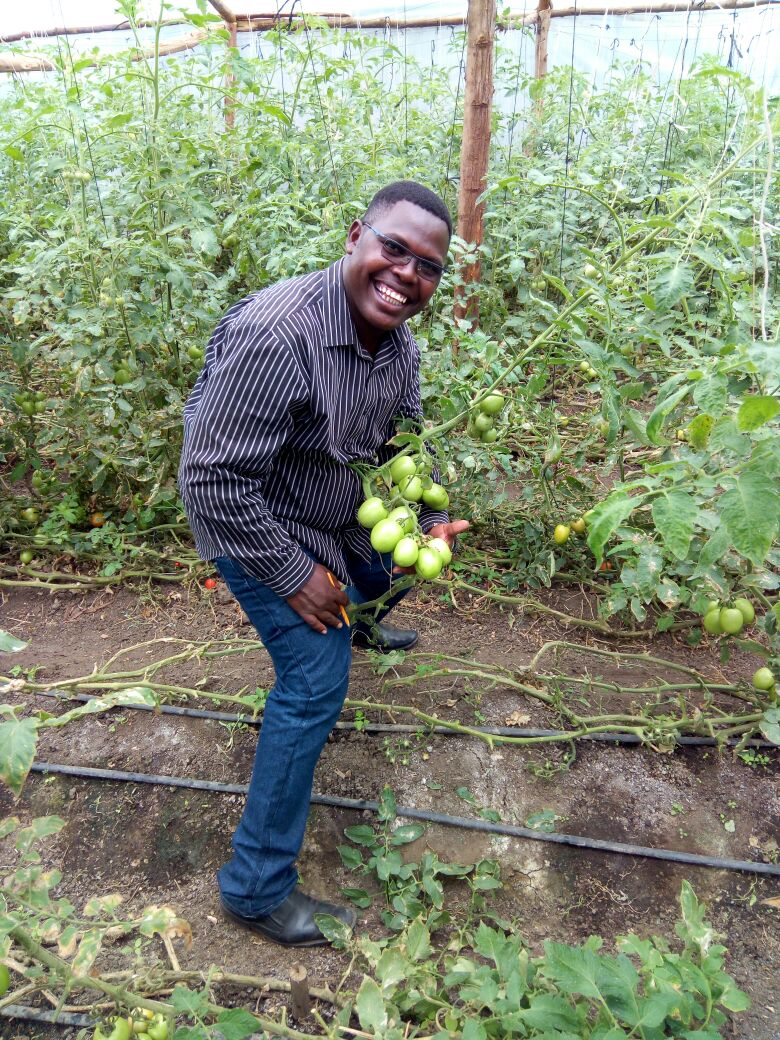 Geoffrey Rono in his tomato greenhouse near Mara River in Narok county. Keeping records on his farming expenses and income has helped him trace well his loses and profits foe the past four years. Photo: Zablon Oyugi.
Geoffrey Rono in his tomato greenhouse near Mara River in Narok county. Keeping records on his farming expenses and income has helped him trace well his loses and profits foe the past four years. Photo: Zablon Oyugi.
In 20012, Geoffrey Rono lost some six million shillings from wheat farming on his 48 acres of land due to the lack of proper record keeping across his expenses and earnings. Since then he has been using a note book to note his farm transactions on a daily basis earning him close to six million shillings annually.
“By the end of 2013, I was unable to account for my wheat production expenses, all I noticed was that I could not plant the following season as the money I realised from selling wheat was not enough to buy fresh farm inputs,” said Rono.
“I felt totally finished to a point of committing suicide as I had never lost such a huge amount of money before. I now use a 612-page hard book to record my production expenses, sales and timing of my crops, which enables me know when to plant, what to add at a given production level, and market trends on a daily basis.”
Rono was forced to begin everything afresh, changing from wheat to hay production and greenhouse farming. He also had to sell his tractor, which he used for cultivation, for Sh1.5m, to begin again, with hay production, in 2014.
RELATED ARTICLE: Ways to maintain farm records
On sharing his ordeal, the area agricultural extension officer and fellow farmers advised him on the benefits of bookkeeping, which he has since adopted, as he has ventured into Boma Rhodes hay production and greenhouse tomato farming.
He grows Boma Rhodes hay in 48 acres piece of plot three seasons a year producing up to 200 bales per season translating to 600 bales a year. A bale fetches him Sh250 earning him about Sh2.8m net annual profit.
“I sell my hay to farmers practicing dairy farming in Githunguri and Machakos where farmers practice zero grazing and experience limited pasture respectively. Narok receive enough rainfall for pasture and is also occupied by Maasai herders who own big land and have enough space to graze their animals,” said Rono.
He also has six greenhouses measuring 8x40 metres with a capacity of carrying 1250 tomato plants per season translating to about 7500 plants from the six greenhouses.
RELATED ARTICLE: Super grass cuts greenhouse gases, tripling yields
Under good agronomical practices, Rono says that one tomato plant can fetch about Sh500 earning him Sh3.8m at the end of every season.
After deducting my expenses on fertilizer, labour, transport, and seeds I remain with Sh3.2m net income per season.
He grows Anna F1 tomato variety from Amiran Kenya from where he get agronomists who help him with skills and trainings to aid him in his production process.
“I like the tomato variety because it matures fast, reaching maturity just in 75 days after transplanting. With good management and when planted in a greenhouse it produces a huge yield of 74 tons per acre (about 85 kg per square-meter).”
RELATED ARTICLE: Project creates lowcost greenhouses for East African farmers
















Comments powered by CComment